
Debora Gordon, a recently retired OUSD teacher, after 28 years, now teaching adult ESL via Zoom, interviews OUSD teachers and one librarian about distance learning. This is part two of the series. Read part one here.
At this point in the term, in what we have somewhat dubiously termed “normal” times, there might be a growing excitement and relief that two breaks are in sight: first, in OUSD, an entire week off for Thanksgiving, and just three weeks later, two weeks off for winter break. But while many teachers and students are indeed relieved to step back from their computers, the extended gloom of Zoom fatigue may linger as they continue on for this last week before the first break, the sense of very much “not normal” continues as those on both sides of the current instructional model wonder if and when they might return to “what was.”
In the meantime, the teaching continues as teachers figure out how to make understandable the mysteries of the English language for both native speakers and English learners, the possibilities of science and the ways math is so much more than numbers, as well as introducing kindergartners to the very world of school in their first formal introduction to it, and all from a literal distance through the endless tunnel of Zoom.
Such is teaching at the end of the fall in a year that has been substantially deviant from whatever was, whether “normal,” or not.
Nestor Gonzalez, 11th & 12th grade Biology Teacher at Dewey Academy, 30 years teaching
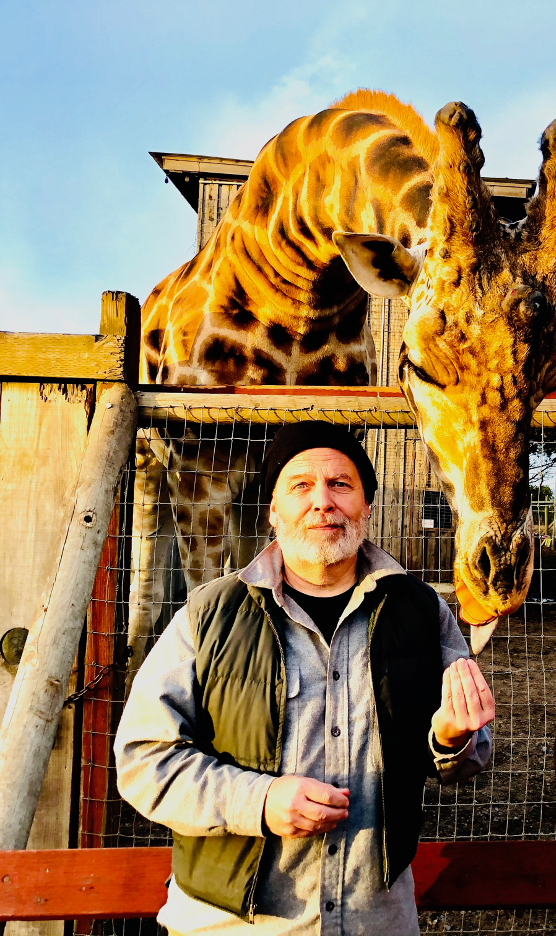
I have five classes totaling 41 students. Fifteen have been no shows and twenty-six that are participating. Twelve of my students’ parents have engaged with me at least once, through Talking Points, to exchange texts to parents. Parents rarely respond but I use the tool to send notes home.
Each class meets three times a week. Initially I was using the online meeting as a “class”-type of setting with lecture, visuals, and discussion but I was not reaching the students. One to three students would show up per class (usually the same students). I then started to record a lecture for each class and post that lecture as a viewing assignment to catch the students that never came to class [but did the work]. I then began to use the online class as a meeting place for students to chat about assignments and to develop a safe place to discuss what is happening in their lives. I began to use the class time as a moment to build relationships and tend to students’ social emotional needs. My work has become focused on the individual need.
I am doing my best to serve my students using this tool as available. If I return to the classroom, I am ready and as a professional that has been my working space.
My concerns in returning would be safety for us all. If my life is not protected and safe in the regular classroom. I will not return. When students do not show up, I am diligent in finding them and encouraging their engagement. It works and it is very time-consuming as a way to get them to participate.
The students are completely distracted by everything and it is very hard to keep them motivated.
Nestor Gonzalez, 11th & 12th grade Biology Teacher at Dewey Academy
You must push yourself as a teacher and find what is working from fellow colleagues across all available media outlets. Most importantly I must not let discouragement take hold. It is tough to be in continual communications in which you must with hold your expectations of interaction intellectually.
Our union is very competent in presenting the needs of teachers in this COVID environment. I can only ask the district to work with my union. I trust my union leadership and I know I will be well represented.
This work is exhausting. In the midst of a pandemic it is so very lonely. I must continually look to encourage myself and not let the fires, COVID, the elections, the hurricanes, the riots, BLM, people being shot, the distractions must be kept at bay. And finally I am really upset that we in general are trying to act like this is “business as usual” or that it will return to “normal.”
Loraine Woodard, 9th & 10th grades ESL/Reading Teacher at Oakland International High School, 20 years teaching
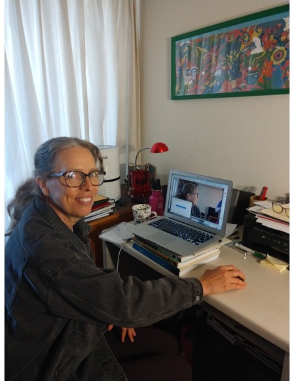
Students finally almost all have laptops and mostly know how to use them. Although technical problems often come up, they can get onto Zoom, but most don’t turn on cameras, so I often don’t see their faces.
Attendance is at about 80 to 90 percent now, when we started in August, it was maybe 40 percent. I have asked them to speak, but some don’t want to. I have two students who are very shy; one just recently started speaking.
It seems like students are liking it. I have asked them what they think; one student told me he’s learning a lot. They really like having class online because some feel it’s not safe to be in school because of COVID-19. If schools were opened, many students want to hug, so it would be hard to come back.
Some students are not doing their homework or are still confused about how to find the homework, or even getting onto Zoom. I feel I am not getting to know my students as well as I normally know them. I am concerned about how much they’re learning, and I am worrying about them, wondering if they’re okay. It’s hard not being able to see them.
I feel I am not getting to know my students as well as I normally know them. I am concerned about how much they’re learning, and I am worrying about them, wondering if they’re okay. It’s hard not being able to see them.
Loraine Woodard, 9th & 10th grades ESL/Reading Teacher at Oakland International High School
The advantages are that students feel safer, they are forced to manage their own time and be self-disciplined. One girl told me she can concentrate on her work better online, without distractions from other students. One student said she had learned time management; another is learning how to not get distracted by his phone. Challenges include students often having to take care of younger siblings; one of them is doing 4th grade work with his younger sister while in his own class. And there’s the sound issue, ongoing issues with audio/technology.
My return depends on the number of COVID cases in the community, and if the schools are prepared, if we have a way to get the kids coming to school safely on public transportation, if we can have outside small classes, and lots of PPE on hand at all times. If I don’t feel comfortable, I will not go back. Although if there is a vaccine, I might consider it. We should survey our parents before any in-person learning to see what they think.
Advice to the district is to consider outdoor classes; not only at the school itself, but perhaps in parks so kids don’t have to take a bus across town. Also, have small classes.
Celetta Hunter, 9th grade English Teacher at Castlemont High School, 7 years teaching
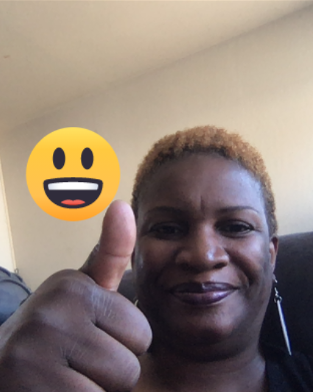
Initially, student response was slow, but attendance and engagement have picked up in the second term.
About 30 percent of parents respond when I contact them. I have had great conversations with parents, but not all are supporting distance learning. It is the same as in person. I believe that more parent support always makes a difference.
The main challenge is getting students and parents acclimated to total online learning, accessing learning platforms, wifi, and laptops while facing the challenges with employment and resources that COVID-19 has brought.
Celetta Hunter, 9th grade English Teacher at Castlemont High School
I use multimedia and learning platforms in my in-person teaching, so it was more about adding more online resources and materials. It is different not to share the energy that you get in person. Increased screen time and more typing for students than they may typically be required to do. Every day is a minimum day.
The greatest challenge of distance learning is buy-in. Teachers, students, and parents are all struggling. Classes are so short that it’s hard to do instruction and guided practice in enough time to be substantive.
The benefits of teaching online are not having to use gas, or bring lunch, and having more prep times. I am not prepared to return to the classroom until a proven vaccine is available as well as a plan from the district and school about in-person teaching safety needs.
The main challenge is getting students and parents acclimated to total online learning, accessing learning platforms, wifi, and laptops while facing the challenges with employment and resources that COVID-19 has brought.
The curriculum is constructed around students’ interests. We learn about things that students aren’t always taught like relationships, getting a job, finding a career, finance including credit, credit unions versus commercial banks and savings, real estate, investment, and retirement.
Everyone is scrambling and struggling to use tech. To the district, I would suggest do your research, get a structured, practical plan that includes collaboration with all stakeholders. Be honest and humane. Please create a comprehensive plan for teachers, students and parents.
Nick Johnson, 9th-12th grade Algebra and Geometry Teacher at Rudsdale Newcomer High School, 10 years teaching
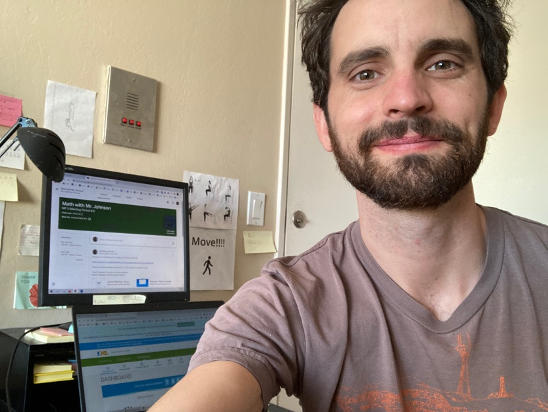
It has obviously been a challenging time for just about everyone. Many students are struggling to connect with school in the distance learning format. Doing things over the computer, where meaningful interactions between students are much fewer and far between than in the classroom.
My students are particularly busy and stressed from the economic hardships brought on by the pandemic. Beforehand, most of my students worked in addition to attending classes, and many lost their jobs and had to find new ways to make ends meet. I reach out one- on-one, and check in about non-academics.
Academically, my students’ particular needs as newcomers makes distance learning challenging. Many of them lacked even the most basic computer skills, and while this does present us with an opportunity, it’s also an additional hurdle. Some students feel insecure about learning this way and are therefore more wary of engaging with school right now. Many have told us that they want to drop out and come back once we go back to normal school, and we had to really clarify for them that we don’t know how soon that’s going to happen. Most of my students support themselves and aren’t here with their parents.
Many have told us that they want to drop out and come back once we go back to normal school, and we had to really clarify for them that we don’t know how soon that’s going to happen. Most of my students support themselves and aren’t here with their parents.
Nick Johnson, 9th-12th grade Algebra and Geometry Teacher at Rudsdale Newcomer High School
In terms of teaching math, I’ve experimented with using different programs like Desmos and Nearpod so that students can still sketch out their thinking. But normally in geometry, we do lots of measurements of things you can hold in your hands. It’s ironically more difficult to teach someone to use a computer when you have to do it over a computer. I go to my school every Friday to do tech distribution. And yesterday, a student of mine asked me to explain a math concept he hadn’t understood from my online lesson, and it was just so much easier in person. He got it in one minute. Being able to have him physically sketch it out on paper, and me being able to quickly point to some parts of his sketch reminded me how much easier it was to teach back in the old in-person days. I would love to return to the classroom as soon as it’s safe for everyone to do so.
As a young-ish white man who just lives with his cats, I’m personally not too concerned for my own health. My cats used to be less involved in my class than they are now. But I don’t think that our schools should reopen until it is safe for all our students and their families, and there’s a science-backed plan to protect those who are most vulnerable. So, I won’t return to the classroom until our union has approved such a plan.
My advice to the district is to negotiate in good faith with OEA, and give teachers time to prepare for the transition back to the classroom.
Sara Shepich, English Teacher of 50/50 dual language kindergarten at Global Family Elementary, 6 years teaching
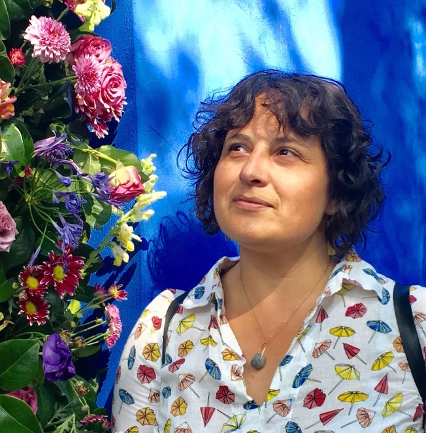
In the spring, it was definitely a switch, but not a huge lift because my students all had a basic understanding of Chromebooks. And we had a very good relationship established.
Now, everything has been a large measure more challenging because we started with a group of new students, some who have never experienced any sort of school before, and with almost no understanding of Chromebooks. But, ultimately, kids are sponges, they have a natural curiosity, and they learn quickly. And many have older siblings who are helping navigate everything.
In a regular year, my school is challenged with varying family literacy levels–now it’s that, plus digital literacy. And families who can’t help because they also have no experience with tech. My school has a high population of immigrant families, and some who only speak an indigenous language called Mam (from Guatemala).
My school is a 50/50 dual language program. Learning a language is dependent on opportunities to practice which, in person, happened almost constantly in the classroom. This has been especially challenging. More often than not, there is an adult or older sibling helping with answers. I have zero way of knowing that the student themself is giving an authentic answer.
Learning a language is dependent on opportunities to practice which, in person, happened almost constantly in the classroom. This has been especially challenging.
Sara Shepich, English Teacher of 50/50 dual language kindergarten at Global Family Elementary
I, personally, am really veering away from our scripted curriculum, but staying on standard, so I can attend to what’s actually happening in their lives. For example, this week around Halloween—we talked about talking with our parents about whether it’s safe to go trick or treating this year.
It’s watching a student struggle with something, knowing what I would do in person to help them, and not being able to do it. There’s a constant feeling of helplessness and lack of control, which exists in regular times but is amplified in distance learning. I think the biggest issue is that we just can’t control the learning environment. I have no control over barking dogs, crying babies, three families living in a two-bedroom apartment.
In virtual world, they might have the camera and mic on, but I can’t even see them. Or they’re jumping on the bed, or visibly asleep in the chair. Or they’ve figured out how to turn the camera off and don’t respond at all. My new daily mantra is “I can only do what I can do.”
The district needs to take a serious, realistic evaluation of buildings and grounds. The concerns are almost endless, including facilities, hiring/staffing, proper ventilation, the amount of bodies per area, and kids being kids.
This country has a long history of experimentation on Black, Brown, and Disabled bodies. Do your research—for real, and non-partisan, not by a company that helps fund you. Evaluate the consequences of bringing back “our most vulnerable students.” This district has been gentrified and plagued by mismanagement for decades—are you willing to risk our students and their families lives further?
Debora Gordon is a writer, artist, educator and non-violence activist. She has been living in Oakland since 1991, moving here to become a teacher in the Oakland Unified School District. In all of these roles, Debora is interested in developing a life of the mind. “As a mere human living in these simultaneously thrilling and troubled times,” Debora says, “I try to tread lightly, live thoughtfully, teach peace, and not take myself too seriously.”

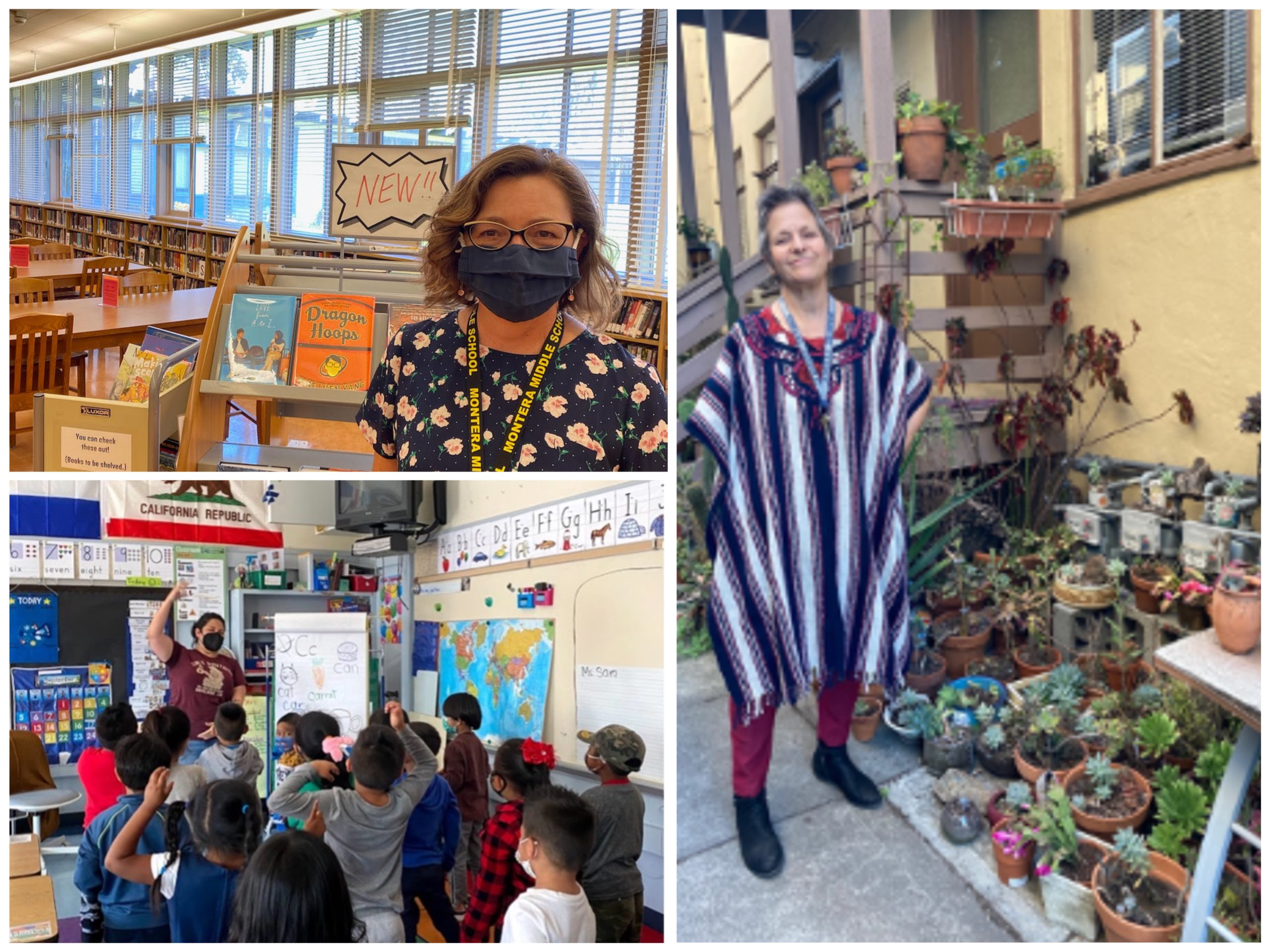

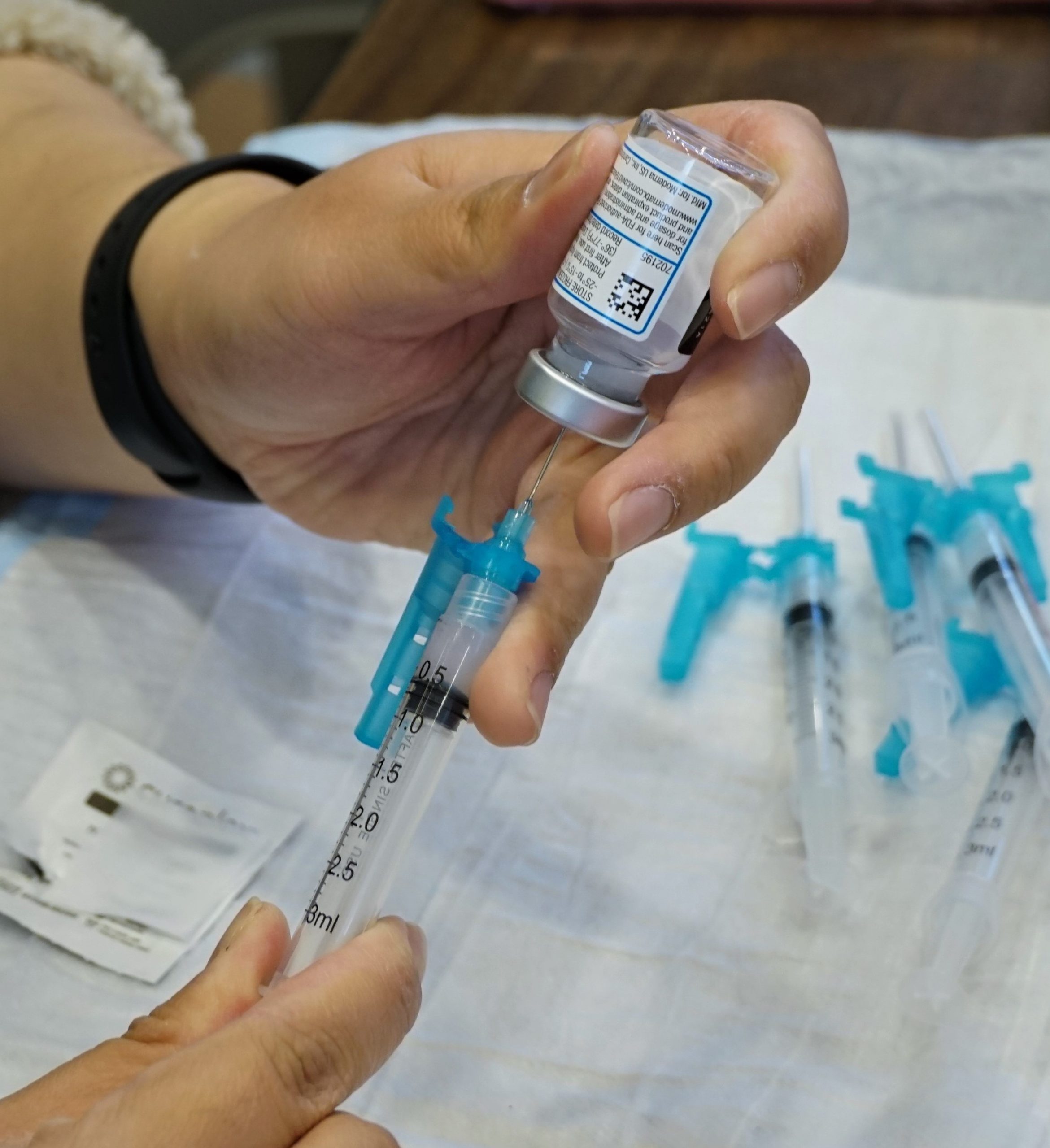
1 Trackback / Pingback